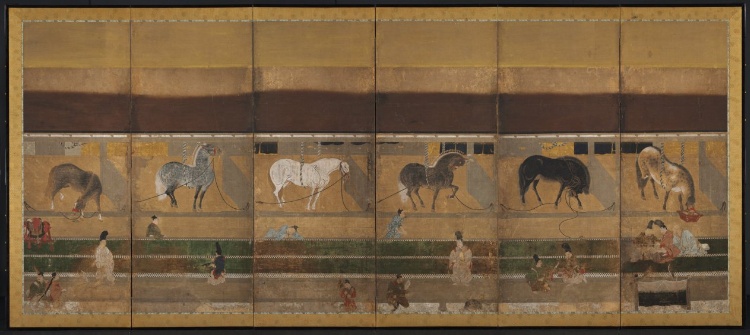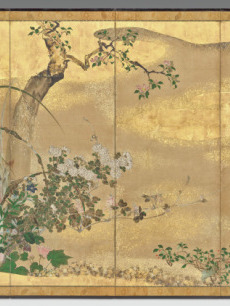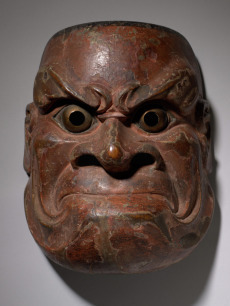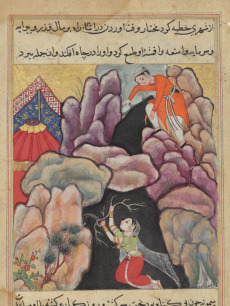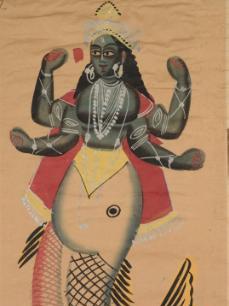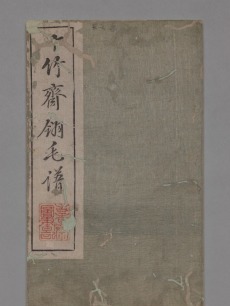Description
The size of this intriguing pair of byōbu is noteworthy because its original dimensions were different. The horizontal band of golden paper at the top was probably added between the seventeenth and nineteenth centuries. What is more, comparing these screens with others depicting stable scenes suggests that the bottom may have been trimmed, seemingly bringing the viewer closer to the setting and its activities.
The impressive steeds are tethered in separate stalls beneath a cedar bark roof much like those still used in traditional Shinto shrines. Each horse is rendered as a particular animal through placement, pose, and coloration. In front of the divider posts for the stalls, which coincide with the individual panel borders, is a fascinating mélange of medieval people and animals. Arranged on and along the double band of deep green tatami mats or the brown wood veranda upon which the tatami are placed, these vignettes provide insights into the culture and society of the later Muromachi period. The horses exhibit the isolated, graceful stateliness long associated in Japan with their power and beauty, and the human figures are comfortable with one another despite their considerable age and social differences. We see stable grooms, courtiers, aged priests, a page boy, a falconer, and a young child playing with a monkey. Also conspicuous are the riding and gaming equipment, animals and birds, and especially the various styles of textiles then in vogue. Not portraits, the figures instead represent types, but they do recall the enduring Japanese interest in mirroring real people from varying social levels. This genius for expressing human wit as well as the overall abstract design sense emanates from a deep familiarity with everyday reality.
Following the earlier illuminated handscroll traditions of the Heian and Kamakura periods in which views of everyday life occupy common ground with religious and aristocratic subject matter, the stable theme represents the revival of attention to patently indigenous subject matter, executed with a palette of mineral pigments in yamato-e, the colorful native Japanese style. Such paintings stand in stark contrast to imported subject matter executed with ink washes in kara-e, or Chinese style. The Four Accomplishments (1979.46.1-2) provides a timely example of that genre, instructive in contrasting palettes, techniques, settings, and depictions of figures.
Of the byōbu known with this subject, it is currently regarded as the earliest that survives. Its author remains a mystery, as is normally the case among yamato-e artists before 1600. Nevertheless, it has a distinguished history of ownership dating back to the sixteenth-century Tokugawa family, whose paulownia crest appears in gold lacquer on a saddle in the left screen.